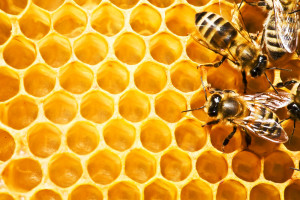 Pella, IA dentist, Dr. Jeffrey Allen understands that you may not believe any sort of prehistoric dental care existed. While there weren’t dental offices in caves, most likely, there was some knowledge and practice in the importance of caring for one’s teeth. Proof of this is in a 6,500-year-old human jawbone with a beeswax filling. The open access journal PLOS ONE printed evidence of this amazing discovery which was made by researchers Federico Bernardini and Claudio Tuniz of Abdus Salam International Centre for Theoretical Physics in Italy.
Pella, IA dentist, Dr. Jeffrey Allen understands that you may not believe any sort of prehistoric dental care existed. While there weren’t dental offices in caves, most likely, there was some knowledge and practice in the importance of caring for one’s teeth. Proof of this is in a 6,500-year-old human jawbone with a beeswax filling. The open access journal PLOS ONE printed evidence of this amazing discovery which was made by researchers Federico Bernardini and Claudio Tuniz of Abdus Salam International Centre for Theoretical Physics in Italy.
Beeswax Fillings
Bernardini and Tuniz worked in cooperation with several institutes to conclude that the material of beeswax was applied to a crack in the tooth of the person who once called this ancient skull part of their anatomy. The application appeared to have transpired just before this person’s actual death which propagates the idea that the filling was placed for the purpose of reducing the sensitivity and pain in the tooth. Not much is known about prehistoric dentistry, so the beeswax filling is particularly exciting to researchers. The jawbone was uncovered in Slovenia. Historians are calling this the most ancient example of a dental filling ever found in Europe.
Modern Solutions for Cracked Teeth
Luckily, if a patient sustains a cracked tooth in our modern times, several solutions for treatment are available, and none of them involve beeswax. When a back tooth is mildly damaged from a chip or crack, a regular metal or tooth colored filling is normally recommended. When a front tooth is cracked and will affect the appearance of your smile, composite resin is usually suggested for the filling as it provides color matching options and translucence similar to the look of a natural tooth. Resin is pliant and shapeable until exposed to a curing light which hardens it to a tooth-like texture. Beeswax was an innovative choice of our ancestors, but will likely never make a comeback in any modern dental procedures.
Visit your Pella, IA Dentist
Dr. Jeffrey Allen provides comfortable comprehensive dental care to patients of all ages. Call (641) 628-1121 to schedule a checkup and cleaning, cosmetic consultation, or second-opinion visit.



